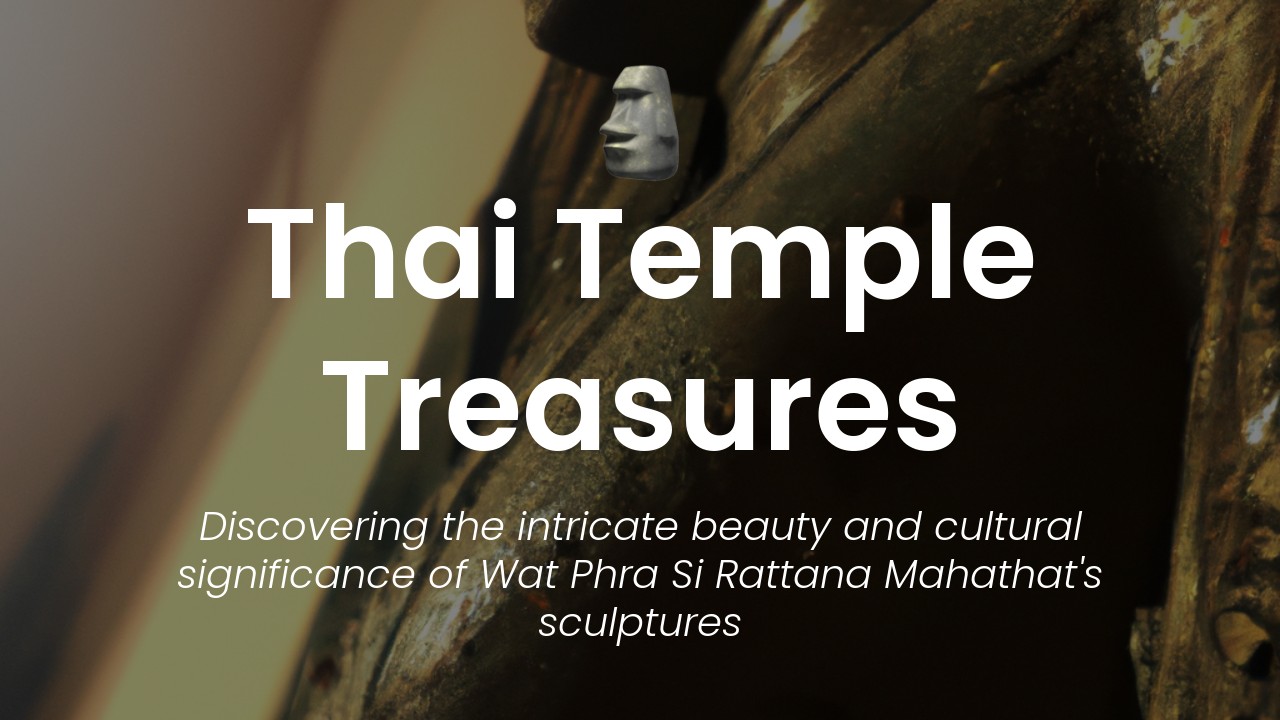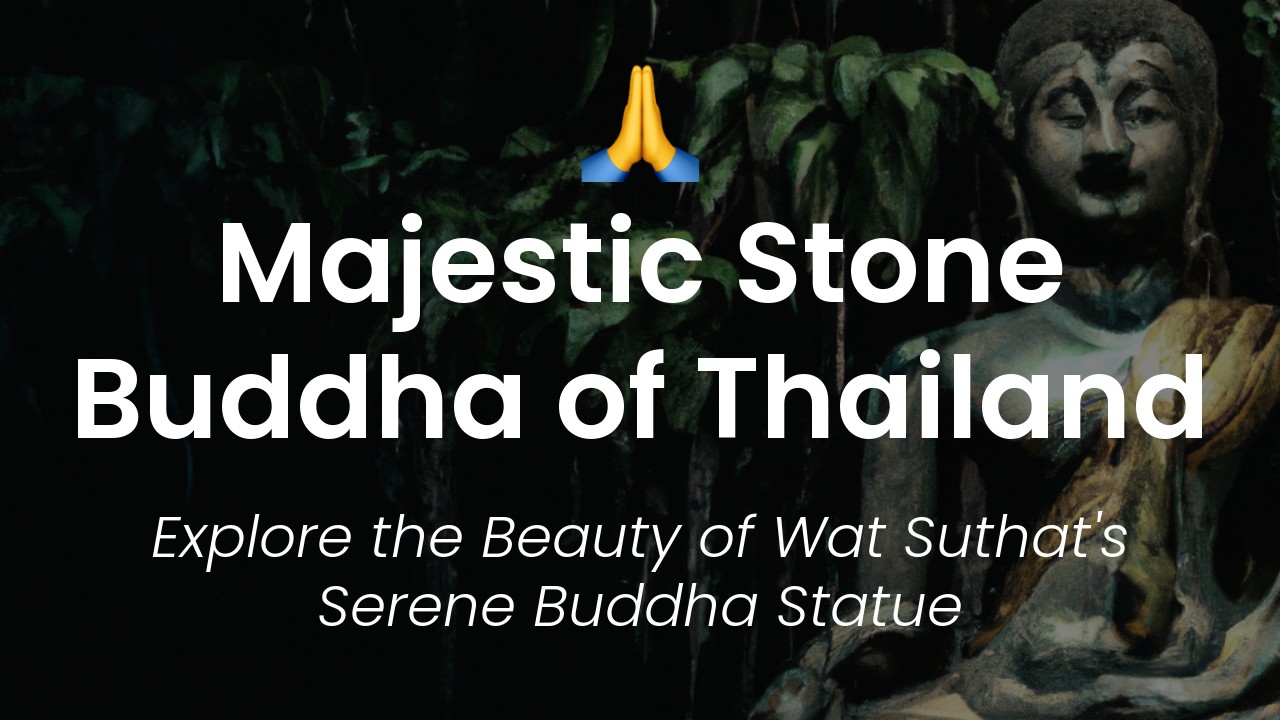As a Thai, I take great pride in the unique and diverse cultural heritage of my country. For those who are interested in exploring the beauty of the Land of Smiles beyond the typical tourist spots, Northeast Thailand or Isan, is a hidden gem waiting to be discovered. The region is home to some of the most significant religious sites and stunning Buddhist sculptures in the country, reflecting its rich history and diverse influences.
In this blog post, I want to take you on a journey through some of the most breathtaking Buddhist sculptures that can be found in Northeast Thailand. These sculptures offer a glimpse into the region's indigenous art forms, as well as the intricate Buddhist art that has been imported from neighboring countries. It is a unique blend of history, culture, and religion which will fascinate anyone who has a passion for art and architecture.
To truly understand the origins and significance of these sculptures, I will give you a historical background on the region and how it has contributed to the evolution of Thai art. I will then showcase the stunning sculptures of Northeast Thailand, featuring locations such as Wat Phra That Phanom, the revered site for northeastern Thais, and the UNESCO World Heritage Site of Phimai Historical Park. Each sculpture is unique and tells a story, a testament to the creativity and ingenuity of the artists who made them.
Join me on this journey through the stunning Buddhist sculptures of Northeast Thailand and discover the rich cultural heritage of Thailand that is waiting to be explored.
The Historical Significance of Buddhism in the Region
Northeast Thailand, also known as Isan, has a long and rich history that dates back to the time of the Khmer Empire. It is home to some of the most impressive Buddhist sculptures in the country. These sculptures are a testament to the deep-seated culture and religion that has thrived in the region for centuries.
Buddhism was introduced to Northeast Thailand in the 7th century when it was still a part of the Khmer Empire. Over the centuries, the region became an important center of Buddhist learning, with numerous temples and monasteries being established. The region's unique blend of Theravada Buddhism, animism, and Brahmanism gave rise to a distinctive style of Buddhist art that was heavily influenced by the Khmer and Lao cultures.
The Unique Style of Northeastern Buddhist Sculptures
The Buddhist sculptures of Northeast Thailand are known for their distinctive style and intricate details. They are typically made from wood, stone, or bronze and are often adorned with gold leaf, lacquer, and colored glass. The sculptures are characterized by their elongated proportions, intricate clothing folds, and graceful poses. They often depict the Buddha, bodhisattvas, and other important figures from Buddhist mythology.
One of the most striking features of Northeastern Buddhist sculptures is their expressive faces. The sculptors used a variety of expressions to convey a range of emotions, from serenity and compassion to fierce determination. The sculptures are also known for their meticulous attention to detail. Every aspect of the sculpture, from the folds in the clothing to the texture of the skin, is carefully crafted to create a work of art that is both beautiful and meaningful.
Phra That Phanom: The Most Important Buddhist Sanctuary in Northeast Thailand
Phra That Phanom is one of the most important Buddhist sanctuaries in Northeast Thailand. Located in Nakhon Phanom province, it is believed to house the remains of the Buddha's breastbone. According to legend, the breastbone was brought to the region by Arahant Thera Mahakassapa, one of the Buddha's most important disciples.
Phra That Phanom is home to a stunning pagoda that is covered in gold leaf and decorated with intricate designs. The pagoda is surrounded by smaller chedis, statues of the Buddha, and other important figures from Buddhist mythology. Visitors can also explore the temple grounds, which include a beautiful garden, a museum, and a meditation hall.
Other Must-See Buddhist Sculptures in the Region
While Phra That Phanom is the most famous Buddhist sanctuary in Northeast Thailand, there are many other impressive sculptures in the region that are worth visiting. One such example is the Wat Phra That Kham Kaen temple in Khon Kaen province. This temple is known for its impressive 9-meter-tall standing Buddha statue, which is considered one of the largest in Thailand.
Another must-visit temple is the Wat Thung Sri Muang in Ubon Ratchathani province. This temple is home to a beautiful reclining Buddha statue that measures more than 20 meters long. The statue is covered in gold leaf and features intricate details and expressive features that are characteristic of Northeastern Buddhist sculptures.
Understanding the Symbolism in Northeastern Buddhist Sculptures
Every Northeastern Buddhist sculpture is full of symbolism that is deeply rooted in Buddhist mythology and philosophy. For example, the elongated proportions of the sculptures are meant to represent the grace and elegance of the Buddha and his disciples. The intricate clothing folds are meant to represent the Buddha's teachings, which are often complex and difficult to understand.
The various hand gestures, or mudras, used by the Buddha and other figures in the sculptures also hold deep meaning. For example, the Bhumisparsha mudra, or "earth-touching" gesture, represents the moment when the Buddha overcame temptation and attained enlightenment. The Abhaya mudra, or "fearless" gesture, represents protection and fearlessness in the face of danger.
Where to Find the Best Buddhist Sculptures in Northeast Thailand
Northeast Thailand is home to countless temples and sculptures that are worth visiting. Some of the best places to see Northeastern Buddhist sculptures include:
- Phra That Phanom in Nakhon Phanom province
- Wat Phra That Kham Kaen in Khon Kaen province
- Wat Thung Sri Muang in Ubon Ratchathani province
- Wat Phra Si Mahathat in Nakhon Ratchasima province
- Phra That Choeng Chum in Surin province
These locations offer visitors a chance to explore the unique culture and history of Northeast Thailand while experiencing some of the most impressive Buddhist sculptures in the country.
In Conclusion, Northeast Thailand's rich history and deep-seated Buddhist culture have given rise to some of the most impressive sculptures in the country. These sculptures are a testament to the skill and creativity of the region's artisans and the importance of Buddhism in Northeastern Thailand. Whether you're a Buddhist pilgrim or simply interested in art and culture, Northeast Thailand's Buddhist sculptures are sure to leave a lasting impression.







